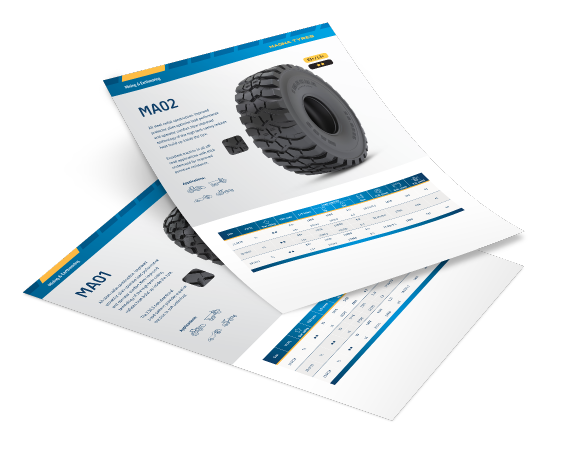How to Calculate TKPH
Before we explain how you can calculate TKPH we first need to specify what we mean by this term and why you need it. TKPH stands for Tonne Kilometres Per Hour. TKPH is a method of answering one of the fundamental questions regarding load transport: How much load can I transport on a set of tyres per working hour?
The Tonne Kilometres Per Hour index indicates what your tyres can handle. It depends on the compound and materials that are used. A common misunderstanding is that TKPH gives information about the vehicle too. This is not the case. Tonne Kilometres Per Hour has nothing to do with the size of the tyre, the type of vehicle or the soil condition it is used on.
The Importance of TKPH
Choosing the right OTR tyre for your vehicle is one of the most important factors that determine tyre life. If a tyre is selected with a deviating TKPH marking, the tyre wear will drastically increase and the overall cost of transport will increase too. If you calculate TKPH correctly, your tyres will last like they are meant to and maybe even longer!
Calculate Tonne Kilometre Per Hour
The formula for calculating TKPH may look difficult at a first glance, but is actually not that hard to work with.
TKPH = ( mean tyre-load ) x ( average work-shift speed )
Mean Tyre-Load
As you can see, the formula consists of two parts. In order to figure out the TKPH we need to know the average tyre load a vehicle carries. To be more precise, how much is the total weight of the vehicle with and without carrying a load. In this case ‘mean’ means the average weight of a full and an empty vehicle. We add both weights to get a total and then divide it by two to get the average. This gives us the next fairly simple sub-formula:
Mean tyre-load = ( tyre-load empty + tyre-load fully loaded ) / 2
Average work-shift speed
The second half of the formula focusses on the actual kilometres covered during shifts. First we need to know the amount of distance the tyres need to cover for a full cycle. To be more plain; how much distance does a tyre travel to haul a load from point A to point B and back to point A again. We call that a round-trip or a cycle/shift. To get a total of the covered distance we need to multiply this amount by the number of cycles a tyre makes per shift. In order to bring it back to an average work-shift speed we divide the multiplied amount of distance by the total hours of operation per shift. This may look confusing in writing, but if we formulate it as a formula it may be more clear to you:
Average work-shift speed = ( round-trip distance x number of cycles/shift ) / total hours of operation/shift
If you use both outcomes in the first formula you will get a certain number. Congratulations, you just calculated the Tonne Kilometre Per Hour for your vehicle! This number should always be lower than the load index. You can learn how to read your tyre here.
Example
Load per tyre of an empty vehicle: 9,000 kg
Load per tyre of a loaded vehicle: 15,000 kg
Rotation hours per day: 8 hours
Number of cycles per day: 15 cycles
Distance per cycle: 14 km
Mean tyre load = (9,000 + 15,000) / 2 = 12,000 kg (12 tons)
Average work-shift speed = (14 km x 15 cycles) 8 = 26.25 km/h
TKPH = 26.25 km/h x 12 tons = 315 TKPH
In general, a higher TKPH has a higher heat resistance and is more suitable for long hauls. A lower TKPH has a better wear resistance and is better suited for slower speeds and shorter distances. If you wish to know which of our tyres would fit your machinery, feel free to contact us! We will gladly help you select the right tyre for your machinery.


